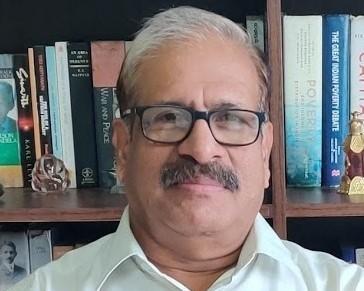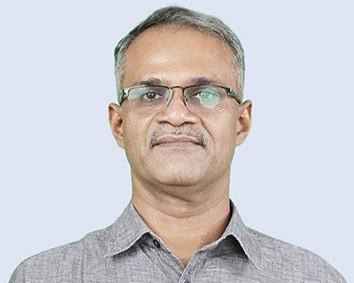The Covid-19 pandemic has affected the countryside in myriad ways, and rural women particularly so. The International Labour Organization (ILO) has pointed to the vulnerability of women to the pandemic due to their overrepresentation in hard-hit sectors and jobs such as domestic work, garment labour, and front-line efforts related to pandemic response. Women also bear an unequal burden of unpaid family care work, which is exacerbated during lockdown and other containment measures. Even though the majority of women in India live in the countryside, efforts to understand their issues have been limited.
As part of a study that aims to understand the gendered impacts of the Covid-19 pandemic on women in rural India, the Foundation for Agrarian Studies (FAS) conducted two Focus Group Discussions (FGDs) in selected villages from Tamil Nadu and Karnataka. We have surveyed villages from both Karnataka and Tamil Nadu as part of our Project on Agrarian Relations in India (PARI). This note reflects on certain aspects that influence the implementation of a Focus Group Discussion in rural India, based on our experiences in conducting an FGD in a village in Tamil Nadu.
Focus Group Discussion is a method to collect qualitative data from a pre-selected group of individuals through semi-structured discussions facilitated by a professional external moderator. This method is particularly useful to bring out aspects such as shared experiences of sections of a population, differences within subsections of them. It is a useful tool for validating the findings obtained from other methods of study, as well as an exploratory tool to generate research questions for further study.
Our experience of organising these FGDs made us reflect upon the importance of (1) prior knowledge of the conditions, (2) a systematic approach at organising the discussions, (3) considerations of space, and (4) considerations of time for organising discussions. Each of these aspects have an important role in designing a focus group discussion.
First, we set out for planning the focus groups. Our FGDs were designed to be participated exclusively by women. The prior survey data that we had access to was used to prepare the list of potential participants to be invited for the FGDs. We decided to conduct two FGDs, the first of which was to be held among Dalit women from households engaged in wage work, and the second with caste-Hindu women from the peasantry. This decision was based on two observations: these are the two prominent groups in the village and there was a separation between these two groups in terms of living spaces, and occupations as observed during the previous survey of FAS. This prior knowledge of the village and its characteristics were thus instrumental in the design of these discussions.
Secondly, a systematic and careful plan can go a long way in generating interest in participants and improving the quality of the discussion. Our approach was as follows. After deciding on the groups, we met with the government officials and elected representatives of the village to apprise them of the study and seek their cooperation in conducting the discussions. The research team that coordinated the discussions split into two groups and visited twelve households per group to appraise each household of the study and invite the women to participate in the discussion. The groups were led by female researchers, which smoothed the interaction with invitees. A subsequent visit was made to collect basic information such as name, age, sex, list of household members along with their age, occupation, and education level. This second visit also served as a follow-up invitation to participate. Finally, the team was prepared to make a third and final visit to the households at the time of the discussion if enough participants had not turned up for the discussions. However, in both cases, all participants that were invited turned out for the discussion. We believe that this was partly due to the systematic nature of the approach.
Thirdly, considerations of space play an equally important role in ensuring healthy participation from the participants of the discussion. The location of the group discussion should meet several criteria. It should be capable of comfortably housing all participants, relatively free from interruptions, easily accessible to the participants, and reasonably close to their households. We were able to inspire confidence in our event when the invitees saw that there are others invited from their neighbourhood and that the location of the group discussion was close to their residences. Company and familiarity improved the odds of participation from the invitees. A temple compound in the middle of the chief Dalit settlement in the village was identified for the first group discussion. For the second group discussion, the compound of the Primary Health Centre in the village was used with the permission of the health institution.
Finally, the time of the discussion is also of importance as it can affect the degree, nature, and quality of participation just like the other two factors discussed earlier. The FGD should take place at such a time, and for such a duration, as to have minimal impact on the daily routines of the participants. We also made it a point to visit the households at a time of their convenience. Each FGD was planned to take no longer than one hour, in order to ensure retention of participants’ attention as well as to avoid any major interruption of their daily activities. From the discussions with key informants, we identified early afternoon as a time that did not interfere with the daily routines of most women.
In sum, we were able to complete both the focus group discussions smoothly, with the participants being cordial and invested in the discussions. Our experience reflects the importance of careful planning – which in this case meant discussing with village representatives, identifying apt location and time, and systematic invitation of participants – along with prior knowledge of the setting as some important factors that helped in successful implementation of FGDs in the countryside. These considerations stand out from the usual approaches discussed in manuals, guidelines, or methodological notes related to conducting FGDs.
About the author
C. A. Sethu is a Senior Research Assistant at the Foundation for Agrarian Studies.

















































































